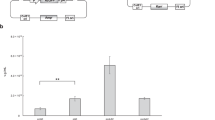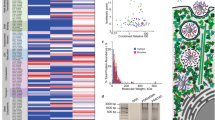Abstract
Poor efficiency of adenoviral gene transfer to target cells is a major limitation to adenoviral gene therapy. Inefficient gene transfer occurs in the absence of coxsackie- and adenovirus receptor (CAR) on the cell surface, and can be overcome by enhancing viral entry with cationic molecules. Recombinant adenovirus (Ad) noncovalently complexed with polycations imply a lack of transduction specificity. Therefore, we have investigated the potential of a novel light-specific treatment, named photochemical internalization (PCI), to enhance gene delivery of adenovirus serotype 5 (Ad5) complexed with the cationic agents poly-L-lysine (PLL) and SuperFect™. Cell lines differing in their receptiveness to Ad5 were infected with amounts of virus transducing about 2% of the cells by conventional Ad infection. The combination of polycations and photochemical treatment enabled a substantial increase in reporter gene expression, resulting in up to 75% positive cells. The effect was most prominent in cell lines expressing moderate to low levels of CAR. Furthermore, we show that PCI enables proper gene delivery of fiberless Ad5 at viral concentrations and infection times where transduction of photochemically untreated cells was negligible, both in the absence and presence of PLL. Thus, we conclude that the photochemically induced transduction by adenoviral vectors complexed with polycations present an opportunity to obtain high cell-infectivity levels with low viral doses, also without the fiber–CAR interaction.
This is a preview of subscription content, access via your institution
Access options
Subscribe to this journal
Receive 12 print issues and online access
$259.00 per year
only $21.58 per issue
Buy this article
- Purchase on Springer Link
- Instant access to full article PDF
Prices may be subject to local taxes which are calculated during checkout







Similar content being viewed by others
References
Bergelson JM et al. Isolation of a common receptor for coxsackie B viruses and adenoviruses 2 and 5. Science 1997; 275: 1320–1323.
Tomko RP, Xu R, Philipson L . HCAR and MCAR: the human and mouse cellular receptors for subgroup C adenoviruses and group B coxsackieviruses. Proc Natl Acad Sci USA 1997; 94: 3352–3356.
Mathias P, Wickham T, Moore M, Nemerow G . Multiple adenovirus serotypes use alpha v integrins for infection. J Virol 1994; 68: 6811–6814.
Wickham TJ, Mathias DA, Cheresh DA, Nemerow GR . Integrins αvβ3 and αvβ5 promote adenovirus internalization but not virus attachment. Cell 1993; 73: 309–319.
Wickham TJ, Filardo EJ, Cheresh DA, Nemerow GR . Integrin alpha v beta 5 selectively promotes adenovirus mediated cell membrane permeabilization. J Cell Biol 1994; 127: 257–264.
Walters RW et al. Basolateral localization of fiber receptors limits adenovirus infection from the apical surface of airway epithelia. J Biol Chem 1999; 274: 10219–10226.
Wickham TJ et al. Targeted adenovirus gene transfer to endothelial and smooth muscle cells by using bispecific antibodies. J Virol 1996; 70: 6831–6838.
Krasnykh V et al. Advanced generation adenoviral vectors possess augmented gene transfer efficiency based upon coxsackie adenovirus receptor-independent cellular entry capacity. Cancer Res 2000; 60: 6784–6787.
Fasbender A et al. Complexes of adenovirus with polycationic polymers and cationic lipids increase the efficiency of gene transfer in vitro and in vivo. J Biol Chem 1997; 272: 6479–6489.
Arcasoy SM et al. Polycations increase the efficiency of adenovirus-mediated gene transfer to epithelial and endothelial cells in vitro. Gene Therapy 1997; 4: 32–38.
Kaplan JM et al. Potentiation of gene transfer to the mouse lung by complexes of adenovirus vector and polycations improves therapeutic potential. Hum Gene Ther 1998; 9: 1469–1479.
Qiu C, De Young MB, Finn A, Dichek DA . Cationic liposomes enhance adenovirus entry via a pathway independent of the fiber receptor and alpha(v)-integrins. Hum Gene Ther 1998; 9: 507–520.
Clark PR et al. Polycations and cationic lipids enhance adenovirus transduction and transgene expression in tumor cells. Cancer Gene Ther 1999; 6: 437–446.
Di Nicola et al. Recombinant adenoviral vector-LipofectAMINE complex for gene transduction into human T lymphocyes. Hum Gene Ther 1999; 10: 1875–1884.
Dodds E, Piper TA, Murphy SJ, Dickson G . Cationic lipids and polymers are able to enhance adenoviral infection of cultured mouse myotubes. J Neurochem 1999; 72: 2105–2112.
Lee SG et al. Enhancement of adenoviral transduction with polycationic liposomes in vivo. Cancer Gene Ther 2000; 7: 1329–1335.
Von Seggern DJ et al. A helper-independent adenovirus vector with E1, E3, and fiber deleted: structure and infectivity in the absence of fiber. J Virol 1999; 73: 1601–1608.
Legrand V et al. Fiberless recombinant adenoviruses: virus maturation and infectivity in the absence of fiber. J Virol 1999; 73: 907–919.
Li E et al. Signaling antibodies complexed with adenovirus circumvent CAR and integrin interactions and improve gene delivery. Gene Therapy 2000; 7: 1593–1599.
Høgset A et al. Light-induced adenovirus gene transfer, an efficient and specific gene delivery technology for cancer gene therapy. Cancer Gene Ther 2002; 9: 365–371.
Berg K et al. Photochemical internalization: a novel technology for delivery of macromolecules into cytosol. Cancer Res 1999; 59: 1180–1183.
Høgset A, Prasmickaite L, Tjelle TE, Berg K . Photochemical transfection: a new technology for light-induced, site-directed gene delivery. Hum Gene Ther 2000; 11: 869–880.
Prasmickaite L et al. The role of endosomes in gene transfection mediated by photochemical internalisation. J Gene Med 2000; 2: 477–488.
Prasmickaite L, Høgset A, Berg K . Evaluation of different photosensitizers for use in photochemical gene transfection. Photochem Photobiol 2001; 73: 388–395.
Prasmickaite L et al. Photochemical disruption of endocytic vesicles before delivery of drugs: a new strategy for cancer therapy. Br J Cancer 2002; 86: 652–657.
Quantum Biotechnologies. AdEasyTM Vector System; Application manual, version 1.2. pp 36–37.
Tang MX, Redemann CT, Szoka Jr FC . In vitro gene delivery by degraded polyamidoamine dendrimers. Bioconjug Chem 1996; 7: 703–714.
Acknowledgements
We are very grateful to Dr Frank L Graham for providing the Ad5CMV-lacZ adenovirus, and to Dr Dan von Seggern for providing the fiberless virus Ad5CMV-gfp-Δf. The work was supported by the Norwegian Research Council, the Norwegian Cancer Society and the Norwegian Ministry of Health.
Author information
Authors and Affiliations
Rights and permissions
About this article
Cite this article
Bonsted, A., Engesæter, B., Høgset, A. et al. Transgene expression is increased by photochemically mediated transduction of polycation-complexed adenoviruses. Gene Ther 11, 152–160 (2004). https://doi.org/10.1038/sj.gt.3302166
Received:
Accepted:
Published:
Issue Date:
DOI: https://doi.org/10.1038/sj.gt.3302166
Keywords
This article is cited by
-
Augmentation of adenovirus 5 vector-mediated gene transduction under physiological pH conditions by a chitosan/NaHCO3 solution
Gene Therapy (2011)
-
Pulmonary delivery of adenovirus vector formulated with dexamethasone–spermine facilitates homologous vector re-administration
Gene Therapy (2007)
-
The concept of molecular machinery is useful for design of stimuli-responsive gene delivery systems in the mammalian cell
Journal of Inclusion Phenomena and Macrocyclic Chemistry (2007)
-
PCI-enhanced adenoviral transduction employs the known uptake mechanism of adenoviral particles
Cancer Gene Therapy (2005)



